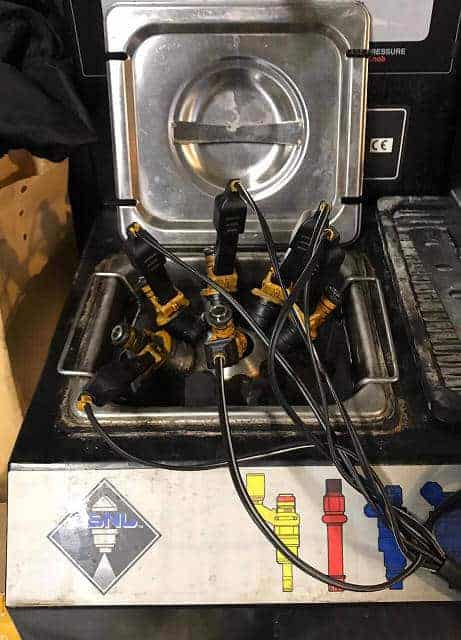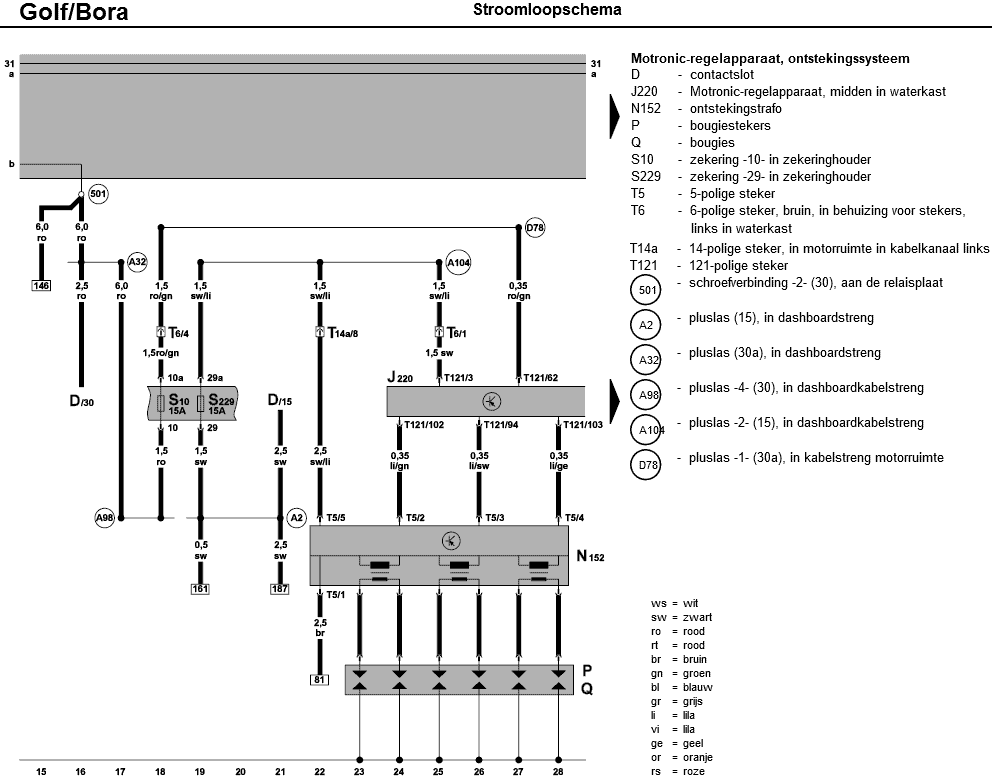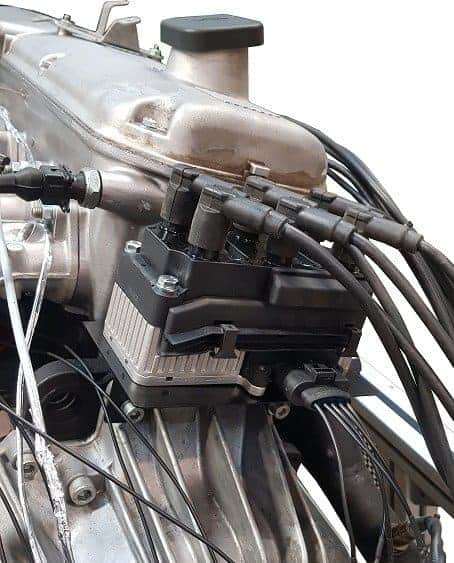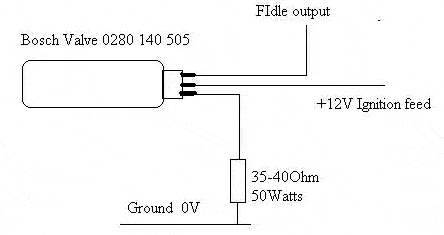Subjects:
- Injection System
- Ignition system
- Idle Control
Injection System:
The BMW engine was already equipped with a multi-point injection system. In this case we don't have to look for suitable injectors and edit the intake manifold, as with the Land Rover projects.
Because the engine was shut down years ago and the gasoline present is outdated, it was initially decided to clean and test the injectors.
It would of course be nice if the engine starts immediately the first time it is started. Because the engine has been standing still for years with outdated petrol, it was questionable whether the injectors would function properly. It would of course be a shame if the engine does not start the first time because one or more injectors do not inject properly. You do not know at that time whether it is due to the injection time, the injection amount, ignition time, you name it. It was therefore decided to clean the injectors in an ultrasonic bath with cleaning liquid and then to test the flow. The image below shows the cleaning procedure. Thanks to Manuel Nunes Pombo and DF Krijgsman motor revision BV
After cleaning, the injectors were checked in a test set-up for the injection quantity (flow) and the leak test when no control takes place. The videos below show the image during the injection and the leak test.
It can be seen that one injector does not inject anything at all and other injectors do not have a good injection pattern. During the leak test, fuel continues to leak from two injectors. Even after cleaning three times it didn't get any better. If we hadn't checked this and made a first attempt at starting, we would have lost a lot of time looking for possible causes after the bad turning and stalling.
Because tuning mainly changes the characteristics that have to do with the injection, the fuel supply must of course function properly. The ignition has already been completely renewed; a new ignition coil, spark plug wires and spark plugs, so it was decided to also fit six new injectors. The injectors remain sealed in the packaging for as long as possible; just before the first engine start they will be mounted in the intake manifold.

Ignition System:
The original distributor ignition system is replaced by an electronically controlled triple DIS ignition coil with internal drivers. The ignition coil comes from a Volkswagen V6 engine (engine code AQP).
The diagram below shows the pin assignment of the ignition coil (component code N152).
The ignition coil is supplied with a control signal by the engine control unit (J220). Instead of the original control unit, the MegaSquirt controller will provide this signal.

- pasta;
- ignition signal spark A (cylinders 1 and 6);
- ignition signal spark B (cylinders 3 and 4);
- ignition signal spark C (cylinders 2 and 5);
- plus (12 volts).
The following properties are also known and can be entered directly into TunerStudio:
- Spark output: going high;
- Number of coils: 3, wasted spark;
- Cranking Dwell: 4ms;
- Nominal dwell: 2,3 ms.
In order to be able to mount the ignition coil as close as possible to the engine, we have made a custom support. The bracket is mounted on the bottom with the gearbox bolts to the gearbox housing. The ignition coil is attached to the support with four M6 bolts and nuts.

Idle Control:
A two-wire PWM valve can be connected directly to the MSII ECU. The controller sends a pulse width modulated signal to the PWM valve which opens against the spring force. When the duty cycle decreases or disappears, a spring in the PWM valve closes the control valve. The second connection is for the power supply.
The PWM valve of the BMW engine has three connections:
- PWM for the positive edge;
- PWM for the negative edge;
- Mass.
The MSII-ECU sends the PWM signal to the positive edge terminal. The valve opens, but no longer closes. The internal spring is missing. A negative PWM signal should cause the closing. In this case, a 35 ohm, 50 Watt resistor is mounted between the ground connection of the PWM valve and a ground point of the motor to make closing possible. When applying this resistance, a small current always flows through the PWM valve, which acts as a kind of “electric spring”. The PWM signal that the controller sends to the valve overcomes the spring force of the small current. When the signal is reduced or lost, the current closes the valve again.

The 35 ohm resistor gets very hot and is basically a loss of energy. Manufacturers try to minimize these kinds of losses. In this case, other than looking for another type of PWM valve, we have no other choice. Because the resistor gets so hot, it will be mounted on the metal of the motor frame. Through this contact, the resistor releases its heat.
